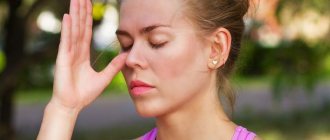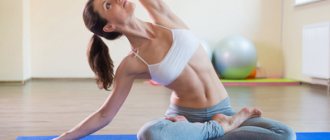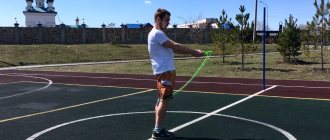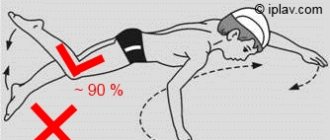During the day we are often tense, focused on work and daily tasks. And no matter how tired we may be in the evening, not everyone can easily immerse themselves in the kingdom of Morpheus.
Often, difficulty sleeping and insomnia are side effects of our not always correct lifestyle. Of course, there are more serious reasons for lack of sleep related to health conditions. Therefore, it is important not to postpone a visit to the doctor if the symptoms of insomnia no longer respond to traditional methods of solving sleep problems (adjusting the alertness regime).
But most often, physical and mental stress, thoughts about work or household chores prevent sleep. In this case, special asanas (exercises) that are designed to relax muscles and distract from specific tasks and problems can help.
Yoga, which you can easily practice at home, will help save the situation, restore calm and sound sleep.
Basic concept of yoga
Yoga in a broad sense means a set of special practices aimed at managing the mental and physiological functions of the body in order for a person to achieve an elevated spiritual and mental state. In a word, yoga is a philosophy of life where the soul and body are in harmony.
Modern yoga (hatha yoga) is a set of exercises (asanas) consisting of breathing, mental and physical practices.
Through asanas (yoga postures), pranayama (breathing practices), mudras (gestures) and shatkarma (internal cleansing of waste and toxins), the union of body and spirit is achieved.
Together, these practices are used to increase energy and improve muscle tone. Hatha yoga teaches concentration and proper expenditure of body energy.
Yoga can be practiced no matter what one's goals or intentions are. Here, weight, age, religious views and health status are also not important - there is a modification of the set of exercises for everyone.
However, if you have health problems, it is better to consult your doctor before starting therapy and perform asanas under the supervision of a guru (teacher).
Method of performing breathing exercises
To improve the quality of sleep, it is necessary to create the most comfortable conditions in the bedroom:
- Prepare a cozy sleeping place for yourself. The mattress should be moderately hard; if possible, orthopedic. Comfortable pillow. Don't surround yourself with too many pillows. You should be spacious.
- Bed linen should be chosen from natural cotton fabric, without the addition of synthetics.
- The air temperature in the bedroom and humidity play an important role. It is recommended to ventilate the room daily before going to bed.
- Don't overload the room with unnecessary things.
- If you are bothered by the light of street lamps, or the sun rises before you, it is worth purchasing a sleep mask. It will help you sleep in complete darkness.
Sleeping on your back is considered the most favorable. This position improves blood circulation and relaxes muscles. But it is not ideal; many people may experience breathing problems.
Sleeping on your side relaxes the spine and back muscles. In this position, the load on the internal organs is not evenly distributed. Essentially, each position has its own pros and cons.
In any case, everyone chooses the most comfortable sleeping position, otherwise falling asleep will be problematic.
Listen to your body. Allow your body to be healthy! Don't expect the effect to come immediately after the first lesson. You should do yoga regularly, preferably daily.
Soon you will feel new and the quality of your life will change for the better.
What is special about evening yoga?
Evening yoga differs from regular yoga only in that all yoga asanas before bed are aimed at calming the central nervous system after a busy day and helping to disconnect from daytime stress.
Long sedentary work, monotony, improper organization of the workplace, a long journey home on public transport or standing in traffic jams - all these factors can cause fatigue. Therefore, our body and mind need rest and relaxation every evening before going to bed.
A special set of “evening” asanas can help relieve stress, calm thoughts, distract from daytime worries and improve the quality of sleep. It is recommended to perform these exercises without tension and gross “wear and tear” of the muscles. The main task of yoga before bed is to make the mind relax, let go of negative emotions, and forget about bad events.
In some asanas, you can use a headrest for maximum relaxation.
Savasana for sleep
The best asana for tuning the whole body to proper rest and ridding the mind of negative emotions and negative thoughts.
Performing this exercise comes down to lying on your back and spreading your legs slightly, placing your arms along your body. The technique consists in alternately relaxing each part of the body and fully concentrating on it. When performed correctly, tightness, stiffness and negative energy should completely disappear from the body. The first in line for relaxation is the head, and the process ends on the legs. After performing the exercise correctly, you usually feel complete relaxation of the whole body.
How to prepare for yoga
To maximize the effect of practice, it is important to follow several rules:
- Choose the right time for evening classes.
The period between 22:00–23:00 is a good time to go to bed. It is during these hours that it is more convenient to adjust “biological rhythms.” The productivity and intensity of biological processes strongly depends on daylight hours. When the sun sets, the body begins to “prepare” for a period of decline in efficiency and subsequent deep rest in sleep. With the onset of darkness, our body begins to produce the sleep hormone melatonin. When natural light hits the retina, the brain receives a command to reduce the activity of producing this hormone. Therefore, it is best to go to bed before midnight and wake up no later than 8 am, as this is considered the physiological sleep-wake pattern for humans. - Setting as part of therapy.
Make sure that during evening classes you are not distracted by extraneous sounds. You can organize a meditative environment, light candles instead of bright lights, and ensure peace and quiet around. You can turn on calm, quiet music for meditation. - The stomach should not be full.
Many of us know that the last meal should take place 2-3 hours before bedtime. The same is true with exercise. In order for our body to feel comfortable doing the exercises, it is better not to start the practice of evening yoga earlier than an hour after dinner. - Ventilate the room before starting classes.
Doing yoga in a stuffy room is harmful to your health. Breathing practices with elevated carbon dioxide levels will have the opposite effect. By the way, sleeping in a stuffy room is also contraindicated for our productivity and health. To ensure that the air in your home is always fresh and clean, you can install a fresh air ventilation device in your apartment - a breather. The breather ventilates the room 24 hours a day, heats the supply air in the cold months, cleans the supply and room air from dust (including dangerous fine dust), allergens, odors, and harmful gases.
Why sleep disturbance is dangerous for the body
Lack of night sleep negatively affects the entire body as a whole. Well-being worsens, concentration decreases, thinking abilities deteriorate, reaction speed decreases, metabolism slows down, internal organs do not fully recover, the amount of strength decreases, and the risk of developing diseases increases.
A person who does not get enough sleep becomes more apathetic, passive, and gets tired faster. These are all the consequences of chronic lack of sleep.
It is also important to know that from 22.00 cleansing processes in the body begin. From about 10 pm to 2 am, our nervous system relaxes and restarts. In order for the process of rest for the psyche to take place efficiently, we must sleep at this time.
If you don't sleep until midnight or later, your nervous system doesn't have time to recover. A heap of feelings, problems, reactions from today flows into tomorrow. And so every day. Therefore, it is important to go to bed on time.
From 11 p.m. to 1 a.m., the gallbladder meridian is activated. If you sleep at this time, then the gallbladder works correctly and bile is released normally. The spleen and stomach are working well. If you are awake at this time, the flow of bile is disrupted, and this leads to its thickening and health problems.
From 1 to 3 o'clock the liver is cleansed. Toxins and waste are eliminated and the blood is renewed. If you want to keep your liver in order, sleep at night.
From 3 to 5 o'clock the lungs are cleared. This is a powerful organ that ensures the supply of oxygen and the removal of carbon dioxide. Normally established gas exchange protects the brain from overstrain.
From 5 to 7 am it is time to cleanse the colon. All the waste that the body has collected during the night should be eliminated from the body. Therefore, in the medicine of different nations of the world, morning bowel movements are considered an indicator of a healthy body. If the process of cleansing from toxins does not occur in the morning, then toxins begin to be absorbed into the blood. Overall this is not good for the body. It will be burdened with excess waste.
Why breathing practice is important
"Pranayama"
literally translated from Sanskrit as regulation of vital energy. According to ancient yogi texts, the more correctly a person breathes, the more vital energy moves in him.
When prana flows freely through our body's subtle energy channels and energy centers (chakras), we can feel energized, healthy, and inspired. This is how the body feels, full of prana (energy) and therefore full of life.
Breathing is as important to our mental, emotional and physical health and well-being as proper nutrition or quality sleep. However, simply breathing as we are used to is not enough.
Breathing is a natural process of life; we breathe without thinking. Yogis believe that breathing should be deep and slow. With normal breathing, we receive a small dose of oxygen, and only the upper parts of the lungs are involved in the process itself. With yogic deep breathing, blood saturation with oxygen occurs faster, which has a beneficial effect on the normalization of blood circulation, nervous system, heart muscle, gastrointestinal tract, etc.
Used by a variety of mental and physical health professionals, yogic breathing has proven effective in helping reduce panic attacks, anxiety, insomnia and depression. Pranayama is also capable of:
- regulate emotions;
- strengthen spatial memory;
- improve the ability to solve problems in a timely manner;
- have a beneficial effect on the cardiac and pulmonary functions of the body;
- help treat irritable bowel syndrome;
- regulate cholesterol and blood sugar levels.
Before starting breathing practice, you should consult your doctor, as there are contraindications.
Pranayama in combination with hatha yoga can increase stress resistance, relax the body and free the mind from everything unnecessary - exhalation stimulates the nervous system to free itself from everything unnecessary and negative, and asanas help relieve tension.
Balasana for sleep
It has a complex effect on the body, eliminating all tension in the body and giving the mind a feeling of complete calm.
The exercise is quite simple. You need to sit with your knees tucked under you on the floor, stretch your arms out in front of you, palms down. Afterwards, you need to slowly and steadily lower your body until your hands and forehead touch the floor. While performing the asana, one should not forget about breathing control. Inhalations and exhalations should be done deep and slow.
A set of yoga exercises before bed
Below we will present a set of asanas that will help your body relax and easily fall into a sound sleep. Remember that breathing is one of the most important therapeutic aspects of yoga. Your goal during each exercise is to focus on your breathing to take your mind off your thoughts and into a sense of yourself.
Lotus Pose (Padmasana)
When starting to practice, the first thing you should do is completely relax your mind. You can distract yourself from obsessive thoughts with the help of one of the fundamental asanas - the lotus pose.
To perform this exercise, you need to sit on the floor (you can use a yoga mat) or on a bed with a hard mattress, crossing your legs. If it is still difficult for you to keep your back straight, lean against the wall or headboard of the bed. The pose should not cause discomfort in the body and muscles.
Close your eyes and spend a few minutes breathing, concentrating on inhaling and exhaling. To perform the asana correctly, breathing should be smooth, only through the nose. To even out your breathing, try to spend at least 4 seconds inhaling and exhaling, and take a short pause between them.
Twisting (Ardha matsyendrasana)
From the lotus position, we smoothly place our right leg behind the left knee and turn our body to the right. We place our left hand on our right leg, trying to turn our body as much as possible. We turn our head following the right hand. Then we smoothly return to the starting position and repeat the same in the other direction, changing the position of the arms and legs according to the asana.
This exercise helps the long back muscles relax after a long day at work.
Watch your breathing, trying to synchronize it with every action.
Bend to the feet (Paschimottanasana)
To perform this asana, you should sit up straight, straighten your legs in front of you, keep your back straight, and straighten your arms along your body. Then take a deep breath, while raising your arms up through your sides and lengthening your spine. As you exhale, slowly lower your body towards your feet. It is important to aim for your legs with your stomach, not your shoulders.
You should stay in this pose for 4 seconds and slowly return to the starting position.
This exercise helps relieve stress and internal tension, clearing the mind of negative thoughts.
Knees to chest, alternately and together (Apanasana)
Another exercise to relieve tension in the long back muscles, which are subject to heavy loads throughout the day, and also to relax the hips. To perform the exercise, you need to lie on your back and, while inhaling, bring one knee to your stomach. Hold the pose for a few seconds, then straighten your leg and repeat the asana with the other leg. Repeat changing legs a couple of times.
Then, in the starting position lying down, bring both legs to your stomach, clasping them with your hands, but do this while exhaling. As you inhale, loosen your grip slightly without straightening your legs. We fix the position and do several cycles to even out breathing. At the end of the exercise, you can sway a little from side to side, and then slowly straighten your legs.
Butterfly Pose (Supta Baddha Konasana)
Lying on your back, inhale and slowly move both hands behind your head. Pull your legs towards your pelvis, spreading your knees to the sides and keeping your feet together. Fix the position and perform several full breathing cycles. After completing this part of the exercise, first slowly return your arms to the starting position, then bring your legs together with your hands. Afterwards, we close our eyes and slowly turn onto our left side, stay in this position for 10 seconds and slowly rise up.
Child's Pose (Balasana)
This asana will help relieve fatigue and relax the muscles, which is necessary for sound sleep. To perform this exercise, sit on your knees with your thighs and feet pressed together. Bend your body forward so that your forehead touches the floor. Place your arms behind your body and place them along your body, palms up. Close your eyes and focus on your breathing cycles for a few minutes while holding the pose.
Contented Child's Pose (Ananda Balasana)
To perform the exercise, you need to lie on your back, bend your knees and bring them to your chest, grab your big toes with your hands and slightly spread your knees to the sides so that they are level with the armpits. The tailbone should be pressed to the floor. To relieve tension, you can rock back and forth a little: this movement imitates a massage of the spine and relieves tension from the back.
Sukhasana for sleep
This asana has a relaxing effect on the nervous system, helps to slow down the heartbeat and relieve tension that has accumulated over a long busy day.
To perform this exercise you need to sit down and cross your legs. Your arms should be extended in front of you, and then your whole body should lean forward without arching your back. Then your elbows should be slowly lowered towards the floor until they touch. The body should remain in this position for several seconds. Then you can return to the original sitting position with your legs crossed.











